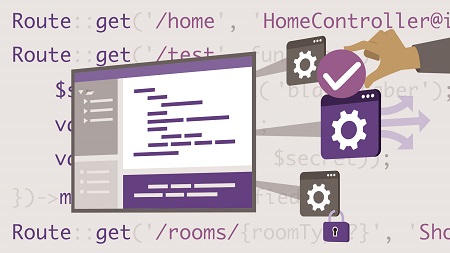
English | MP4 | AVC 1280×720 | AAC 48KHz 2ch | 3h 27m | 2.19 GB
Laravel is the most popular MVC framework for PHP. It builds on PHP standards and conventions, making it easy to create completely customizable, full-featured apps. In this course—the second installment in the Laravel 6 Essential Training series, instructor Justin Yost continues to cover the essentials of working with Laravel 6 as he demonstrates how to build a basic Laravel application to manage a hotel reservation system. Justin explains how to run console commands, add the ability to save images, work with the Laravel service container, write tests in Laravel, write and send emails using your app, and manage user authentication. These videos provide the information you need to make a move to Laravel and build high-quality, scalable, and sound PHP applications.
Topics include:
- Saving and viewing files
- Displaying validation errors
- Console commands, outputs, arguments, and inputs
- Building a Laravel route that has multiple parameters
- Working with the Laravel authentication system
- Preparing for deployment
Table of Contents
Introduction
1 Learning the ins and outs of Laravel
2 What you should know before watching this course
Beyond the Basic Form
3 Saving files
4 Viewing files
5 Validation
6 Displaying validation errors
7 Displaying old input
Artisan Console
8 Console commands
9 Console outputs
10 Console arguments
11 Console options
12 Console inputs
Service Container
13 Service providers
14 Facades
15 Interface service container binding
16 Automatic service container binding
Testing
17 Basic test
18 Database factories
19 As a user
20 Facades
21 File uploads
22 Console commands
Notifications
23 Emails
24 Notifications
25 Queue jobs
26 Queue workers
27 Task scheduler
Routing
28 Route parameters
29 Route model binding
30 Middleware
Laravel Mix
31 Installing and running Laravel Mix
32 CSS processing
33 JavaScript processing
Security
34 Authentication
35 Route authorization
36 Verified users
37 Encryption
38 Password storage
Deployment
39 Preparing for deployment
40 Databases
41 Deploying a change
Conclusion
42 Next steps
Resolve the captcha to access the links!